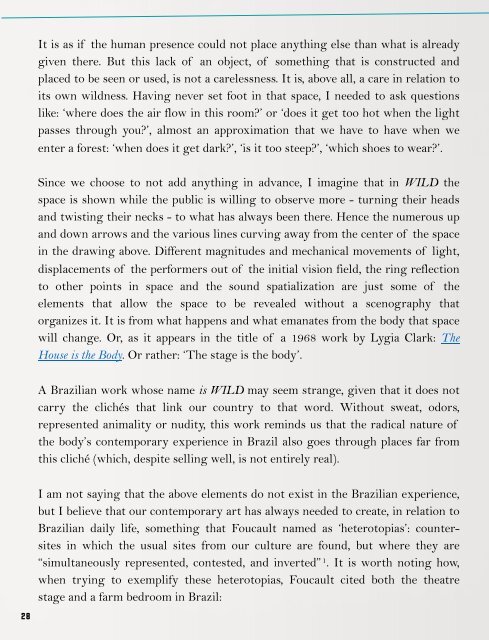K3 MAGAZIN #14
Clarissa Sacchelli ist eine Künstlerin, die im und über den Tanz arbeitet und hat eigene choreographische Projekte zwischen Tanz, Performance, Publikationen und Pädagogik entwickelt. Ihre Praxis ist geprägt von der Erfahrung, überwiegend im lateinamerikanischen Kontext zu leben und zu arbeiten. Sie war im K3 Residenzprogramm in der Spielzeit 2021/2022. Für die 14. Ausgabe des K3 Magazins reflektiert Clarissa gemeinsam mit Kooperationspartner*innen ihr Stück WILD, welches sie im Rahmen der Residenz entwickelt hatte.
Clarissa Sacchelli ist eine Künstlerin, die im und über den Tanz arbeitet und hat eigene choreographische Projekte zwischen Tanz, Performance, Publikationen und Pädagogik entwickelt. Ihre Praxis ist geprägt von der Erfahrung, überwiegend im lateinamerikanischen Kontext zu leben und zu arbeiten. Sie war im K3 Residenzprogramm in der Spielzeit 2021/2022. Für die 14. Ausgabe des K3 Magazins reflektiert Clarissa gemeinsam mit Kooperationspartner*innen ihr Stück WILD, welches sie im Rahmen der Residenz entwickelt hatte.
You also want an ePaper? Increase the reach of your titles
YUMPU automatically turns print PDFs into web optimized ePapers that Google loves.
It is as if the human presence could not place anything else than what is already<br />
given there. But this lack of an object, of something that is constructed and<br />
placed to be seen or used, is not a carelessness. It is, above all, a care in relation to<br />
its own wildness. Having never set foot in that space, I needed to ask questions<br />
like: ‘where does the air flow in this room?’ or ‘does it get too hot when the light<br />
passes through you?’, almost an approximation that we have to have when we<br />
enter a forest: ‘when does it get dark?’, ‘is it too steep?’, ‘which shoes to wear?’.<br />
Since we choose to not add anything in advance, I imagine that in WILD the<br />
space is shown while the public is willing to observe more - turning their heads<br />
and twisting their necks - to what has always been there. Hence the numerous up<br />
and down arrows and the various lines curving away from the center of the space<br />
in the drawing above. Different magnitudes and mechanical movements of light,<br />
displacements of the performers out of the initial vision field, the ring reflection<br />
to other points in space and the sound spatialization are just some of the<br />
elements that allow the space to be revealed without a scenography that<br />
organizes it. It is from what happens and what emanates from the body that space<br />
will change. Or, as it appears in the title of a 1968 work by Lygia Clark: The<br />
House is the Body. Or rather: ‘The stage is the body’.<br />
A Brazilian work whose name is WILD may seem strange, given that it does not<br />
carry the clichés that link our country to that word. Without sweat, odors,<br />
represented animality or nudity, this work reminds us that the radical nature of<br />
the body’s contemporary experience in Brazil also goes through places far from<br />
this cliché (which, despite selling well, is not entirely real).<br />
I am not saying that the above elements do not exist in the Brazilian experience,<br />
but I believe that our contemporary art has always needed to create, in relation to<br />
Brazilian daily life, something that Foucault named as ‘heterotopias’: countersites<br />
in which the usual sites from our culture are found, but where they are<br />
“simultaneously represented, contested, and inverted” 1 . It is worth noting how,<br />
when trying to exemplify these heterotopias, Foucault cited both the theatre<br />
stage and a farm bedroom in Brazil:<br />
28


